Moving Down the Line: Electromagnetic Linear Actuators
In a recent post, we discussed the main categories of electric motors and how they operate. While those electric motors fulfill an important need any time you have to convert electricity into rotational motion, sometimes rotation is not the type of movement needed for an application. In this article, we’ll discuss electro-magnetic linear motors and actuators, which produce linear motion.
Linear Motors: Gliding Along
Let’s first talk about linear motors, that can be thought of as conventional rotating motors whose stator has been unrolled, and laid out flat. Specifically, linear motors are operating by the same principles as their rotating analogues, the AC induction motor and the AC synchronous motor. Maglev trains are an example of large-scale linear motors, where powerful magnetic fields provide both the forward propulsion and the friction-free magnetic cushion that allows these massive trains to reach high speeds with minimal vibration.
Solenoids: Pushing and Pulling with Fields
Another, more familiar type of linear electro-magnetic actuator is the solenoid. A solenoid is a hollow coil of wire that forms an electromagnet, inside of which an armature (the linear equivalent of a rotor) made from a magnetically soft material, is free to slide in and out. These are very useful for on/off mechanical devices, and like fluid valves are easy to build, maintain and operate.
Solenoids are great for applications that need shorter durations of linear movement since once the armature is fully inside the energized coil, it cannot move any further, and thus the solenoid essentially becomes an electric heater. This means that the circuitry that drives the solenoid is usually optimized for supplying large current pulses, in addition to including protection from the counter-EMF produced when the solenoid is turned off.
As we’ll discuss below, a variation on the solenoid design, one which uses a magnetized rod as the armature, has found a niche in low-pressure air pumping.
Advantages of Linear Actuators
Linear motors and solenoids are used in applications where limited linear motion, long operating lifetime and low maintenance are all necessary but a linkage converting rotary motion into linear motion (like a flywheel and crankshaft combination), is not practical or desired.
One such device that showcases the advantages of electro-magnetic linear actuators is the linear air pump. We didn’t discuss these in our recent article on pumps, because linear pumps aren’t a separate category of pump. “Linear” simply refers to how the mechanical energy is transferred to either a sliding piston or a flexing diaphragm and thus already belongs to those two pump categories.
Linear pumps work by using electromagnets (the stator) to generate an alternating magnetic field which alternately push and pull on a magnetized rod (acting as the armature). It’s the movement of this rod that provides the motion needed for a piston or diaphragm pump.
Linear pumps have a very long life, since they use neither bearings nor oil, both of which deteriorate over time and thus require maintenance (and the associated downtime) to replace them. Fewer moving parts also mean fewer potential points of failure. Also, linear pumps are quiet when running and can be highly energy efficient. The AC that energizes the stator can be taken straight from the residential (or industrial) mains, making linear pumps very simple to construct and thus very economical to purchase.
Linear pumps also highlight the main drawbacks of these types of actuators: the outlet fluid pressure is limited to the forces acting on the rod and the strength of the magnetic field, which in turn is limited by the magnetic materials used and the number of loops on the coils. This means linear pumps are limited to low differential pressure applications, like pumping or evacuating anesthesia gas in biological laboratories.
Considerations Specific to Linear Actuators
One of the most important questions to ask if you’re considering using a linear motor or solenoid in your application is, “What are my weight constraints?” In addition to the heavy copper coils in the stator, the armature material is almost always composed of heavy magnetic alloys. If the actuator will be stationary, you’ll have a lot more leeway in your design than if something (or someone) must move the device.
Other important design considerations involve the amount of travel the actuator will need to move, whether you’ll be able to use springs instead of sliding seals (and thus avoid the use of oil lubricant entirely), and whether or not you’ll need to contain all the magnetic fields generated by the actuator.
Linear air pumps, motor assembly and electro-mechanical assemblies are three areas of expertise here at Providence Enterprise. Let us show you how partnering with our team can improve your quality, throughput and cost structures.

